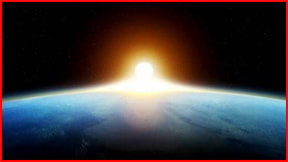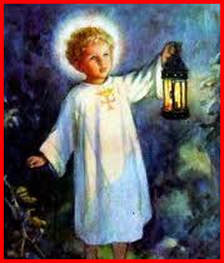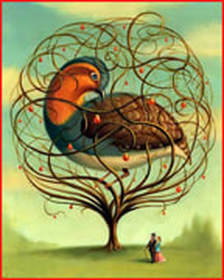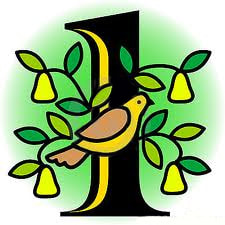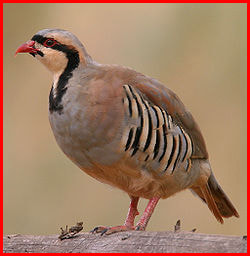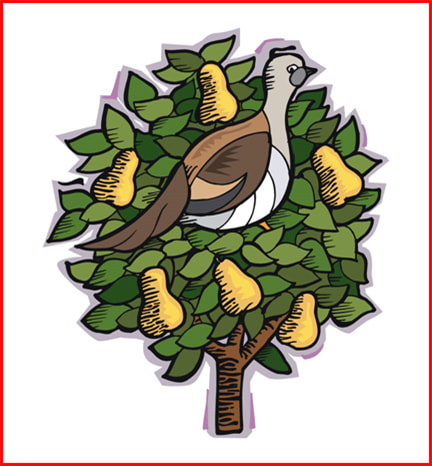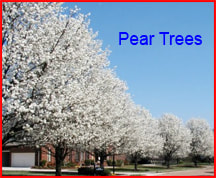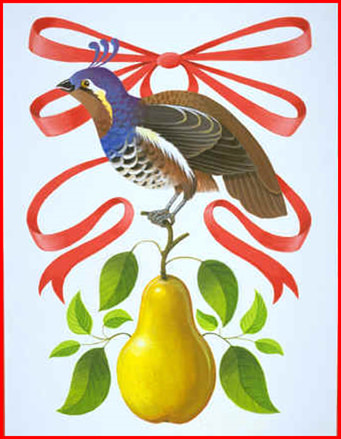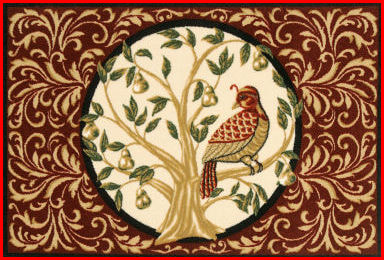| Devotion to Our Lady |
|
- Homepage
-
Daily Thoughts
- 2023 October Daily Thoughts
- Daily Thoughts Lent 2020
- Daily Thoughts for Advent 2019
- Daily Thoughts for October 2019
- Daily Thoughts for September 2019
- Daily Thoughts for August 2019
- Daily Thoughts for July
- Daily Thoughts for June
- Daily Thoughts for Easter 2019
- Daily Thoughts for Lent 2019
- Daily Thoughts for Christmas
- Daily Thoughts Easter 2022
- Sacred Heart
- Holy Ghost
-
Spiritual Life
- Holy Mass Explained
- First Friday Devotions
- First Saturday Devotions
- The Mercy of God
- Vocations
- The Path Everyone Must Walk >
- Gift of Failure
- Halloween or Hell-O-Ween?
- Ignatian Spiritual Exercises >
- Meditation is Soul-Saving
- Spiritual Communion
- Miraculous Medal
- Enrollment in Miraculous Medal
- St. Benedict Medal
- Holy Water
- Advice on Prayer
- Your Daily Mary
-
Prayers
- September Devotions
- Seven Sorrows of Our Lady
-
Novenas
>
- NV-Help of Christians
- NV-Nativity of Our Lady
- NV-Seven Sorrows
- NV- Sorrowful Heart
- NV-Pope St Pius X
- NV-La Salette
- NV-St Michael Archangel
- NV-Immaculate Heart
- NV-Assumption
- NV-Novena for Fathers
- NV-Novena for Your Mother
- NV-St Raphael Archangel
- NV-Souls in Purgatory
- NV-All Saints Day
- NV-Christ the King
- NV-Divine Motherhood
- NV-Guardian Angels
- NV-Rosary
- NV-Mirac Med
- NV- Imm Conc
- NV - Guadalupe
- NV - Nativity of Jesus
- NV-Epiphany
- NV-OL Good Success
- NV-Lourdes
- NV-St Patrick
- NV-St Joseph
- NV-Annunciation
- NV-St Louis de Montfort
- NV-OL Good Counsel
- NV-Last Supper
- NV-Passion
- NV-Pentecost
- NV-Ascension
- NV-Sacred Heart
- NV-Sacred Heart & Perpetual Help
- NV-Corpus Christi
- NV-OL of Perpetual Help
- NV-Queenship BVM
- NV-OL of Mount Carmel
- NV-St Mary Magdalen
- NV- Im Hrt
- August Devotions to IHM
- Immaculate Heart of Mary
- Litany of Dependence
- Prayers to St Mary Magdalen
- Prayers in Times of Sickness Disease & Danger
- Holy Souls in Purgatory
- Meditations on the Litany of Our Lady
- Special Feast Days
- Prayers to Mary (Mon-Sun)
- Litanies to Our Lady >
- Various & Special Needs
- Our Lady of the Rosary
- Our Lady of Mt. Carmel
- Our Lady of Perpetual Help
- Our Lady of Guadalupe
- Other titles of Our Lady
-
Rosary
- Downloads
- Consecration
- Easter Season
-
Holy Week
- Last Seven Words of Jesus >
- Characters of Passion >
- The Last Days of Christ
- Before Palm Sunday
- Palm Sunday
- Monday in Holy Week
- Tuesday in Holy Week
- Wednesday in Holy Week
- Holy Thursday (Last Supper)
- Holy Thursday (Agony & Arrest)
- Night Vigil with Christ
- Good Friday (Pilate & Herod)
- Good Friday (Way of Cross & Crucifixion)
- Saturday in Holy Week
-
Lent
- Ideas for Lent
- Daily Lenten Planner
- Daily Lenten Liturgy
- From Cold to Hot
- Lent with Aquinas
- Lent with Dom Gueranger
- Virtues for Lent
- History of Penance
- How Expensive is Sin?
- Confession of Sins
- Letter to Friends of the Cross
- Sermons for Lent
- Stations of the Cross >
- Lenten Prayers
- 7 Penitential Psalms
- Lenten Psalms SUN
- Lenten Psalms MON
- Lenten Psalms TUE
- Lenten Psalms WED
- Lenten Psalms THU
- Lenten Psalms FRI
- Lenten Psalms SAT
- Lenten Laughs
- Septuagesima
-
Christmas
- Epiphany Explained
- Suggestions for Christmas
- Food For Thought
- Christmas with Aquinas
- Christmas with Dom Gueranger
- Christmas Prayers
- Candles & Candlemas
- Christmas Sermons
- Christmas Prayers SUN
- Christmas Prayers MON
- Christmas Prayers TUE
- Christmas Prayers WED
- Christmas Prayers THU
- Christmas Prayers FRI
- Christmas Prayers SAT
- Twelve Days of Christmas >
-
Advent Journey
- Purgatory
- Christ the King
- Legion of Mary
- Scapular
-
Saints
-
Martyrs for the Faith
>
- Your Daily Martyr >
- All 365 Days of Martyrs
- Cristeros
- St Valentine & Valentine's Day
- Martyrs--Thomas Becket
- Martyrs--John the Apostle
- Holy Machabees
- Age of Martyrdom
- Carmelites of Compiegne
- Martyrs--Peter & Paul
- Martyrs--John the Baptist
- Martyrs--Andrew
- Martyrs--James the Great
- Martyrs--North American
- Martyrs--Seven Holy Sleepers
- Martyrs--Afra
- School of Martyrdom
- Martyrs--Christina
- Desert Saints >
- Saints for Sinners >
- Saints of Mary >
- History of All Saints Day
-
Martyrs for the Faith
>
- Precious Blood
- Synod 2023
-
Catechism
- Catechism Lesson 1
- Catechism Lesson 2
- Catechism Lesson 3
- Catechism Lesson 4
- Catechism Lesson 5
- Catechism Lesson 6
- Catechism Lesson 7
- Catechism Lesson 8
- Catechism Lesson 9
- Catechism Lesson 10
- Catechism Lesson 11
- Catechism Lesson 12
- Catechism Lesson 13
- Catechism Lesson 14
- Catechism Lesson 15
- Catechism Lesson 16
- Catechism Lesson 17
- Catechism Lesson 18
- Catechism Lesson 19
- Catechism Lesson 20
- Catechism Lesson 21
- Catechism Lesson 22
- Bible Study
-
Calendar
- Miracles
- Apparitions
- Shrines
- Prophecies
- Angels Homepage
- Hell
-
Church Crisis
- Conspiracy Theories
- Amazon Synod 2019 >
- Liberalism & Modernism
- Modernism--Encyclical Pascendi
- Modernism & Children
- Modernism--Documents
- The Francis Pages
- Church Enemies on Francis
- Francis Quotes
- Amoris Laetitia Critique
- Danger of Ignorance (Pius X)
- Restore all In Christ (Pius X)
- Catholic Action (Pius X)
- Another TITANIC Disaster?
- The "Errors of Russia"
- CRISIS PRAYERS
- Election Novena 2024
- The Anger Room
- War Zone
- Life of Mary
- Spiritual Gym
- Stupidity
- Coronavirus and Catholicism
- History & Facts
- Books
- Catholic Family
- Children
- Daily Quiz
-
Novena Church & Pope
- Day 01 Church-Pope Novena
- Day 02 Church-Pope Novena
- Day 03 Church-Pope Novena
- Day 04 Church-Pope Novena
- Day 05 Church-Pope Novena
- Day 06 Church-Pope Novena
- Day 07 Church-Pope Novena
- Day 08 Church-Pope Novena
- Day 09 Church-Pope Novena
- Day 10 Church-Pope Novena
- Day 11 Church-Pope Novena
- Day 12 Church-Pope Novena
- Day 13 Church-Pope Novena
- Day 14 Church-Pope Novena
- Day 15 Church-Pope Novena
- Day 16 Church-Pope Novena
- Day 17 Church-Pope Novena
- Day 18 Church-Pope Novena
- Day 19 Church-Pope Novena
- Day 20 Church-Pope Novena
- Day 21 Church-Pope Novena
- Day 22 Church-Pope Novena
- Day 23 Church-Pope Novena
- Day 24 Church-Pope Novena
- Day 25 Church-Pope Novena
- Day 26 Church-Pope Novena
- Day 27 Church-Pope Novena
- Day 28 Church-Pope Novena
- Day 29 Church-Pope Novena
- Day 30 Church-Pope Novena
- Day 31 Church-Pope Novena
- Day 32 Church-Pope Novena
- Day 33 Church-Pope Novena
- Day 34 Church-Pope Novena
- Day 35 Church-Pope Novena
- Day 36 Church-Pope Novena
- Day 37 Church-Pope Novena
- Day 38 Church-Pope Novena
- Day 39 Church-Pope Novena
- Day 40 Church-Pope Novena
- Day 41 Church-Pope Novena
- Day 42 Church-Pope Novena
- Day 43 Church-Pope Novena
- Day 44 Church-Pope Novena
- Day 45 Church-Pope Novena
- Day 46 Church-Pope Novena
- Day 47 Church-Pope Novena
- Day 48 Church-Pope Novena
- Day 49 Church-Pope Novena
- Day 50 Church-Pope Novena
- Day 51 Church-Pope Novena
- Day 52 Church-Pope Novena
- Day 53 Church-Pope Novena
- Day 54 Church-Pope Novena
- Penance Novena
- Daily WeAtheR Forecast
CLICK ON ANY CHRISTMAS LINK BELOW
(most links are available now, the other links will activated shortly)
TWELVE DAYS OF CHRISTMAS
| 12 Day Homepage | 1st Day of Christmas | 2nd Day of Christmas | 3rd Day of Christmas |
| 4th Day of Christmas | 5th Day of Christmas | 6th Day of Christmas | 7th Day of Christmas
| 8th Day of Christmas | 9th Day of Christmas | 10th Day of Christmas | 11th Day of Christmas | 12th Day of Christmas |
PRAYING THE PSALMS THROUGH CHRISTMAS
| Sundays | Mondays | Tuesdays | Wednesdays | Thursdays | Fridays | Saturdays |
SPIRITUAL READING THROUGH CHRISTMAS
| St. Thomas Aquinas on Christmas | Dom Gueranger on Christmas |
(most links are available now, the other links will activated shortly)
TWELVE DAYS OF CHRISTMAS
| 12 Day Homepage | 1st Day of Christmas | 2nd Day of Christmas | 3rd Day of Christmas |
| 4th Day of Christmas | 5th Day of Christmas | 6th Day of Christmas | 7th Day of Christmas
| 8th Day of Christmas | 9th Day of Christmas | 10th Day of Christmas | 11th Day of Christmas | 12th Day of Christmas |
PRAYING THE PSALMS THROUGH CHRISTMAS
| Sundays | Mondays | Tuesdays | Wednesdays | Thursdays | Fridays | Saturdays |
SPIRITUAL READING THROUGH CHRISTMAS
| St. Thomas Aquinas on Christmas | Dom Gueranger on Christmas |
THE CONTROVERSY OVER THE SONG "THE TWELVE DAYS OF CHRISTMAS"
In the last 20 or so years, there has been quite a bit of controversy over the song The Twelve Days of Christmas. Some say it was a cryptic catechism song, used by the persecuted Catholics of England as a means to teach their children some rudimentary teachings of the Faith under the disguise of a seemingly harmless song. Others contest this, by saying that there is no evidence to back-up this claim and say that the alleged points of doctrine to be found hidden in the song, are ... (click here to read more)
"...A Partridge in a Pear Tree"
|
"IN THE BEGINNING..."
The first thing that strikes the mind on this "First Day of Christmas" is that this is the BEGINNING of the song. It reminds us of the first day of Creation, where God starts to create something out of nothing. That was the beginning of time, just as this first day is the beginning of the song. It reminds us of two passages of the Bible that speak of the beginning. Both concern God: one is God creating in the beginning; the other is the beginning of St. John's Gospel, where he uses the same words as are used to begin the Book of Genesis: "In the beginning..." “In the beginning God created Heaven, and earth. And the earth was void and empty, and darkness was upon the face of the deep; and the spirit of God moved over the waters. And God said: ‘Be light made!’ And light was made. And God saw the light that it was good; and he divided the light from the darkness. And He called the light Day, and the darkness Night; and there was evening and morning: one day” (Genesis 1:1-5). Jesus is the first-born, the only-begotten Son of God. Jesus is the Light that has come into the darkness of the world. St. John begins his Gospel with the same words as the Book of Genesis: "In the beginning was the Word, and the Word was with God, and the Word was God. The same was in the beginning with God. All things were made by Him: and without Him was made nothing that was made. In Him was life, and the life was the light of men. And the light shineth in darkness, and the darkness did not comprehend it" (John 1:1-5). LIGHT AND DARKNESS This reference to God creating light to dawn and rise over the darkness, runs parallel to Christ being the light sent to dispel the darkness of sin in our world. “They eat the bread of wickedness, and drink the wine of iniquity. But the path of the just, as a shining light, goeth forwards and increaseth even to perfect day. The way of the wicked is darksome: they know not where they fall” (Proverbs 4:17-19). This is what Christmas lights should be all about: they should be a reflection of the Light that has come into the darkness or dark night of the world. But the beginning of this song should remind us of the the ONE God Who created out of nothing at the beginning of time; and it should remind us of the beginning of our redemption and salvation through God, in the Person of Jesus Christ, Who begins His life upon earth on the very first Christmas Day. The prophecy of Isaias, that refers to the birth of Christ and the purpose of His coming, says: “Arise, be enlightened, O Jerusalem: for thy light is come, and the glory of the Lord is risen upon thee. For behold darkness shall cover the earth, and a mist the people: but the Lord shall arise upon thee, and His glory shall be seen upon thee. And the Gentiles shall walk in Thy light, and kings in the brightness of Thy rising” (Isaias 60:1-3). Jesus would later say of Himself: "I am the light of the world: he that followeth Me, walketh not in darkness, but shall have the light of life" (John 8:12) ... “I am come a light into the world; that whosoever believeth in Me, may not remain in darkness" (John 12:46) ... “As long as I am in the world, I am the light of the world” (John 9:5). He will communicate His light to us, He will, in effect light our candle, so that we too can pass on that light to others. He says of His followers: “You are the light of the world. A city seated on a mountain cannot be hid” (Matthew 5:14), just like the bird, the partridge, which naturally prefers to remain on the ground, and not be seen in trees, so as to hide from predators. Yet in the song the partridge is in a pear tree, raised up on high and highly visible, like a city on mountain top, or candle perched on top of the candlestick, attracting attention by its light. There we have this idea of light coming back again. TRUE LOVE The “True Love” symbolizes God, Who is the only one who loves us truly and loves us the most. God is love itself:"God is charity" (1 John 4:8) and “God so loved the world, as to give His only begotten Son; that whosoever believeth in Him, may not perish, but may have life everlasting” (John 3:16). That is true love, to love the souls in the world despite their sins and to come to save those who were manifesting a hatred of God through their sins. Therefore, it is only natural that we should “truly” love Him in return, with our whole heart, mind, soul and strength. THE NUMBER ONE The number ONE is of immense significance. There are numerous things that it reminds us of: ► There is only ONE God ► There is only ONE true religion: the Catholic Faith ► There is only ONE Name through Whom we can be saved: Jesus Christ ► There is only ONE life in which to work out our salvation: no reincarnation, no second chance. ► There is ONE Whom we should love above all: God, with our whole mind, heart, soul and strength. Of course, you will come up with many more examples using the number ONE. But, ultimately, God should be NUMBER ONE in our lives: “Seek ye therefore FIRST the kingdom of God” (Matthew 6:33). THE PARTRIDGE The “Partridge” symbolizes Our Lord Jesus Christ. A bird, in a sense, lives above the world, for it has wings to help it rise above the world. Jesus would say that He is not of this world, but of Heaven: “And he said to them: You are from beneath, I am from above. You are of this world, I am not of this world" (John 8:23). And He wants us to put our treasure in the things that are above and not in those things that are below: “Lay not up to yourselves treasures on earth ... But lay up to yourselves treasures in Heaven ... For where thy treasure is, there is thy heart also” (Matthew 6:19-21). “Therefore, if you be risen with Christ, seek the things that are above; where Christ is sitting at the right hand of God. Mind the things that are above, not the things that are upon the earth”(Collosians 3:1-2). Yet, in a sense, the partridge is humble, preferring not to nest high up on the branches of the trees, but preferring to nest on the ground or the soil (humus is Latin for soil, from which has the root "hum-" that forms the root of our word "humility"). The “Partridge” symbolizes Our Lord Jesus Chris because the partridge is both a very fertile bird that produces many offspring, just as Christ continues to produce many offspring in His Mystical Body through conversion and Baptism. The partridge also sacrifices itself for its offspring, acting as a decoy to hunters by pretending to be wounded and thus becoming a victim for the sake of its offspring. Similarly, Jesus was wounded, suffered and died for us, attracting the rage of the “hunter” (the devil) upon Himself. THE PEAR TREE The pear is native to coastal and mildly temperate regions of the Old World, from western Europe and north Africa east right across Asia. It is a medium-sized tree, reaching 30–45 feet tall, often with a tall, narrow crown; a few species are shrubby. The leaves are alternately arranged, simple, 1–5 inches long, glossy green on some species, densely silvery-hairy in some others; leaf shape varies from broad oval to narrow lanceolate. Most pears are deciduous, but one or two species in southeast Asia are evergreen. Most are cold-hardy, withstanding temperatures between −25 °C and −40 °C in winter, except for the evergreen species, which only tolerate temperatures down to about −15 °C. The flowers are white, rarely tinted yellow or pink, 1–3 inches in diameter, and have five petals. THE SYMBOLISM OF THE PEAR TREE The “Pear Tree” is also a Nordic symbol of Life and Immortality. Red-legged partridges seem to have a preference for sitting in pear trees, which is a symbol of the blood-stained Jesus being on the tree of the Cross. Through His Passion and Death, He earns for us the gifts of Eternal Life and Immortality. The Pear Tree is among the first to bloom in the Spring, which is the time when Christ was in the full bloom of His life and bloomed in white innocence on the Tree of the Cross. The white blooms of the Pear Tree symbolize the sinlessness that we should aim for in our lives; also the virtues we should cultivate in our lives and purity of intention with which we should practice those virtues. "So let your light shine before men, that they may see your good works, and glorify your Father Who is in Heaven” (Matthew 5:16). THE SYMBOLISM OF THE PEAR Some authors hold the opinion that the forbidden fruit that Adam and Eve were forbidden from eating was in fact a pear. Potential forbidden fruits of the Garden of Eden include the apple, pomegranate, the fig, the carob, the etrog or citron, the pear, and the quince. Pears and apples cannot always be distinguished by the form of the fruit; some pears look very much like some apples. The apple, a pomaceous fruit of the apple tree, is also from the rose family (Rosaceae), that is to say the same family as the pear. The pear is also a symbol of pregnancy, for when a woman is with child, it is said that she is "pear-shaped." By association, it can be said that the pear is also a symbol therefore of Our Lady, of whom it is said: "Blessed is the fruit of thy womb, Jesus!" For the pear is from the rose family (Rosaceae) and we call Our Lady the "Mystical Rose." The English word “pear” is probably from Common West Germanic pera, probably from the Latin pira, which is of Semitic origin, In Aramaic (Our Lord’s tongue) it is “pirâ”, meaning “fruit”, from the verb “pra”, meaning “to beget, multiply, bear fruit.” These are just a few thoughts, to which you could add many more by researching, reading and reflecting upon the component parts contained in this first of The Twelve Days of Christmas. |
Web Hosting by Just Host


